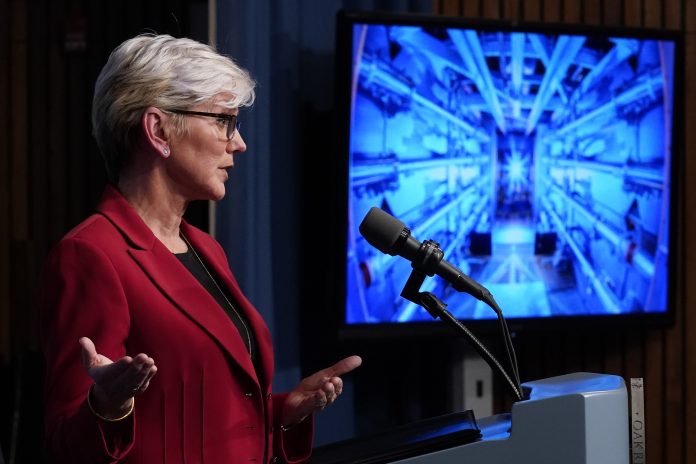Cold fusion may sound like a drink you need to brace yourself for, but it’s a great deal more meaningful than that.
Rather than splitting atoms to make electricity like fission in nuclear power plants, cold fusion combines atoms to generate more energy than is required to make it. Technically speaking, two light nuclei combine to form a single heavier nucleus and release a large amount of energy.
In a breakthrough trumpeted throughout the world, scientists at Lawrence Livermore National Laboratory in California recently “surpassed the fusion threshold by delivering 2.05 megajoules of energy to the target, resulting in 3.15 MJ of fusion energy output and demonstrating for the first time a most fundamental science basis for inertial fusion energy,” they said.
A gaggle of Washington politicians hailed the news as the death knell of fossil fuels, but Waco economist Ray Perryman says there’s many a slip twixt the cup and the lip.
Perryman said that scientists “have known for a century or so that nuclear fusion powers the sun and other stars throughout the universe.
“It has been a well-known concept and even a staple of science fiction,” he said. “Because fusion involves combining atoms rather than splitting them, it has the advantage of not generating radioactive waste and bringing the associated storage and disposal problems.
“In addition, a key input to fusion is hydrogen, which is abundant in the atmosphere. Because of these advantages, the idea that a fusion reaction could be controlled and harnessed to provide power has been the goal of researchers for decades.
“The problem historically has been that it takes more energy to start the fusion reaction than is produced. On Dec. 5, scientists at Lawrence Livermore were able to generate more energy output than the input that was needed, basically proving that fusion as a source of power is not just a theoretical concept but is indeed possible in practice.”
Perryman said private companies across the world had been watching the developments.
“The recent achievement will no doubt lead to a greater focus on the possibilities of fusion, as it should, but moving from this small net gain into a situation where the risk-return tradeoff required by private investors will be sufficient to commercialize the concept on a broad basis is several steps away,” he said.
“It’s certainly exciting news and a step toward a clean energy future, but even assuming that no scientific obstacles arise, we are likely decades away from widespread commercial viability. It is impossible to know the extent of its ultimate deployment, but it is highly unlikely that it will materially affect real world energy supplies over the next 20-30 years.”
Perryman said the breakthrough proved the importance of basic research being funded by the federal government. “Fusion research has been ongoing for decades just to get to the point of a single laboratory reaction,” he said.
“Private capital cannot bear this type of risk and expense and it cannot allocate resources with such a long-term time horizon.”
LLNL, 34 miles east of Oakland, has 8,100 employees and an annual budget of $2.8 billion. A branch of the U.S. Department of Energy, the lab performed the experiment in its big National Ignition Facility, “where 192 laser beams delivered more than 2 million joules of ultraviolet energy to a tiny fuel pellet to create fusion ignition,” its website said.
“Many advanced science and technology developments are still needed to achieve simple, affordable inertial fusion energy to power homes and businesses and the DOE is restarting a broad-based, coordinated IFE program. Combined with private sector investment, there is a lot of momentum to drive rapid progress toward fusion commercialization.
“LLNL built a series of increasingly powerful laser systems leading to the creation of the National Ignition Facility, the world’s largest, most energetic laser system. The size of a sports stadium, NIF uses powerful laser beams to create temperatures and pressures like those in the cores of stars and giant planets and inside exploding nuclear weapons.”
One joule is the equivalent of one watt of power radiated or dissipated for one second.
Now that the concept has purportedly been validated, Perryman said, “The work will begin to implement all the other steps needed for commercial viability and general use.
“Although the investment viability has now shifted to some extent, the next phases will also require public funding,” he said. “It’s a long way from a laboratory situation where massive amounts of power were needed to generate a relatively small net gain to developing even one power plant capable of using cold fusion at a commercial scale, much less to having it power the world.”




